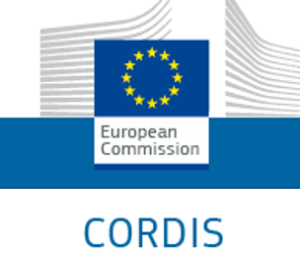Symbolic Forms
The theory of symbolic forms argues that any object of knowledge or practice is present by a process of objectification that is mediated through symbols. These symbols function as integral parts of larger cultural systems called “symbolic forms.” Symbols may, for instance, be linguistic, pictorial or architectural, and examples for the larger symbolic forms are science, art, religion, or economics.
Each symbolic form has a specific domain of normativity and follows its own guiding principle. For example in the case of science, this guiding principle is the search for objective truth, whereas the arts are more preoccupied with the creative exploration of being. These fundamental norms orient their organisation and perception. Because the symbolic forms are concerned with different normative purposes, they highlight at divergent aspects of the world. As a consequence, each of them possesses differing formats of expression and articulation. Think of mathematical equations and formulas in science, or the poetic form of waka as a specific historic format of art. Furthermore, elaborate symbolic forms typically develop specialised expertise organised in specific institutions.
Here are some examples:
|
Symbolic Form |
Normative domain / value |
Format (example) |
Institution (example) |
|
Science |
Objective knowledge / truth |
Mathematical formulas Scientific paper |
ETH Zürich |
|
Art |
Aesthetic creation / beauty* |
Waka Sonata Noh play / Tragedy |
MoMa |
|
Law |
Social order / justice |
Contracts Court hearings |
International Court of Justice |
|
Myth |
Communal understanding and action / significance |
Epic poem Creation stories |
Kataribe Rhapsodes |
*in the Kantian sense of stimulating the free play of the sensitive and intellectual faculties
Symbolic forms are by no means mutually exclusive. Rather, they are irreducible and complement each other. The methods of one symbolic form may expand or eliminate aspects of experience. For instance, take an ink painting. Science will tell us something about the chemical components of the ink and paper, about the physical dimension of the painting, and may help us accurately date it. Art on the other hand will tell us about the design principles employed in the piece, its artistic composition, and how that relates to established modes of painting. Meanwhile, religion may tell us something about the symbolism of religious gestures or artefacts depicted, the piece’s relation to religious doctrine, or the meaning of hanging it in a certain place. Economics may tell us something about its value in relation to other paintings, and so on.
In this way, the symbolic forms complement one another, but may also weigh in unequally, with one form taking precedence over others in a given situation. Thus, the symbolic forms also potentially compete against one another.
Finally, symbolic forms share a set of basic underlying functions – such as, for example, space, quantity or causality – that take on differing modalities in each form. Time, the aspect that the TIMEJ project is investigating, is one of these fundamental categories that are shared amongst symbolic forms. Each of them may favour a different mode of time. For example, while religion may define certain “holy times”, such as a day on which one should not work, the scientific unit t does not know such distinctions. In this example, religion defines and emphasises qualitative aspects of time, whereas science solely is concerned with quantitative aspects, factoring out things such as the subjective experience of time.
As a general framework of analysis for the study of time, the theory of symbolic form thus suggests that in any given cultural situation, there are plural ways to objectify (and thus grasp and understand) temporal aspects and organise them into conceptual units. The situation may be dominated by a specific articulation of a certain symbolic form, such as medicine in the case of healing, or religion in the case of a Buddhist ritual. Each form will come with certain requirements to identify and account for relevant aspects of time. In its articulation it will carry a tradition of tracking, expressing or operatively making use of time in certain ways.
Even so, as mentioned above, actual situations are rarely completely subsumed under a single symbolic form. Several relevant forms – and more importantly, their social representatives – may compete for attention and application of their standards and modes of expression. Individuals may have incentives to prefer the temporal regime of one symbolic form over another, or simply be confronted with a conflict between their personal agenda and the prevalent time regime.
The research areas of the TIMEJ project have been selected to represent four different groups of agents and diverging symbolic and pragmatic agendas. This allows us to investigate the normative implications of the relevant symbolic forms, their traditions of articulation, and domain-specific modalities of time in medieval Japan, as well as their intersections.
Literature on the theory of symbolic forms
Steineck, Raji C. 2014. Kritik der symbolischen Formen I. Symbolische Form und Funktion. Stuttgart: frommann–holzboog.
Steineck, Raji C. 2017. Kritik der symbolischen Formen II: Zur Konfiguration altjapanischer Mythen. Stuttgart: frommann–holzboog.
Cassirer, Ernst. 1953. The Philosophy of Symbolic forms. Translated by Ralf Manheim. New Haven: Yale University Press.
Cassirer, Ernst. 2001. Philosophie der symbolischen Formen. Ernst Cassirer Gesammelte Werke 11–13. Hamburg: Meiner.


